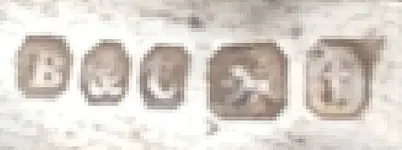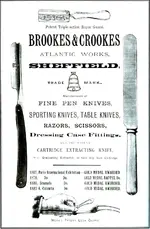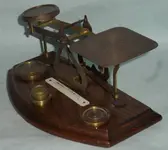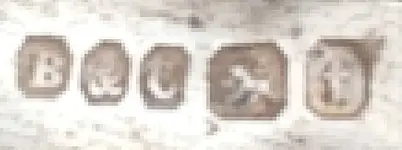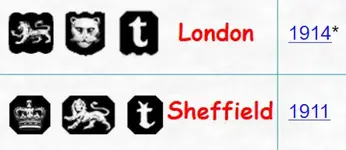Red coat... Are you not familiar with the lion mark being the English standard mark for silver ? ? ?
View attachment 1803648
Of course I am but you're
missing the point. If you read my previous posts or any authoritative source on hall marking in Britain you will see that a hall mark (for this period) has
FOUR elements, as in the example you are showing (the examples I showed depicted three of those elements, since I omitted the maker mark in the interests of clarity).
From your example, the third icon is indeed the standard silver mark as the lion passant. However, that in itself does
not guarantee that you have a piece of solid silver and it was not illegal to use this mark on silver plate. Many manufacturers of silver plate in this period used the lion passant 'dishonestly' (although not illegally) as a way of improving the credentials of what they sold. Never overtly in the sense of it being fraudulent, but as a subtle subliminal suggestion to the purchaser.
If you look at your own example you will see, as I have repeatedly said, that it's accompanied by an assay mark for the town or city authority that has tested and certified the piece as silver. In your own example it's the second icon, as a leopard's head facing and that's the city mark for the London hallmarking authority. That mark (or any other town mark) is
missing from the piece in question. That means there is no indication that it has been certified as silver since it's not an official hallmark unless the town assay mark accompanies the silver mark. It would have been illegal for anyone to apply those two marks in combination on silver plate and that is why the town mark has been omitted. Cynical, but not illegal.
Please read what I said again about pseudo-hallmarks on silver plate, why they were used, and how to distinguish them from actual hallmarks on solid silver.
Note also that the final icon in your example is the date letter as an 'S' within a shield. Date letters are individual to the city that certifies the silver and for London had a 20 year repetitive cycle. That is, 'S' was used again and again every 20 years and so could represent multiple possible dates. For that reason, both the style of the font used and the shield shape surrounding it were changed on a 20 year cycle. Note that the shield in your example has two indents at the bottom and a flat top with chamfered corners. The 'S' is also serifed 'Times Roman'. That specific combination tells us its a lower case 's' and gives us the date 1913 (as opposed to 20 years later as 1933 or 20 years earlier as 1893 for example). Any deviation from these characteristics that are not an
exact match for the expected combination of shield and letter will tell you that you don't have a genuine silver hallmark.
As I pointed out, the piece in question
does have deviations that confirm it has not been officially hallmarked as silver. The font style for the letter 't' does not match up with the officially-designated shield shape for either Sheffield (where the maker was based) or for London (which some manufacturers used as an alternative assay office to their home city).

